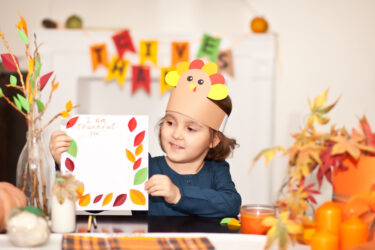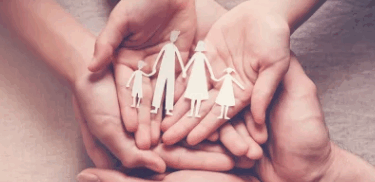With advances in brain research, we know more about how our babies’ minds work. Discover how best to enhance their development of life-long learning behaviors.
 When most of us were babies, scientists knew relatively little about how our brains worked. Since then there have been major discoveries in the field of early childhood development. We know now that infants and toddlers are much more intellectually sophisticated than they may appear, and that the first three years of life are a critical period for brain development. In fact, the way we learn and the connections formed in our brains long before we enter school can determine life-long learning behaviors.
When most of us were babies, scientists knew relatively little about how our brains worked. Since then there have been major discoveries in the field of early childhood development. We know now that infants and toddlers are much more intellectually sophisticated than they may appear, and that the first three years of life are a critical period for brain development. In fact, the way we learn and the connections formed in our brains long before we enter school can determine life-long learning behaviors.
This discovery has led many parents to go overboard in stimulating their babies and toddlers. Newborns listen to classical music. Nurseries abound with black, red and white-striped rattles and toys. Overzealous parents, eager to provide a head start, play foreign language tapes to babies in the womb.
Dr. Rachelle Feiler, assistant professor of early childhood education at Vanderbilt University, notes that parents today face too much pressure to maximize brain development.
“Just because we know that infants and toddlers can learn so much doesn’t mean that we have to plan every moment or buy all the right toys to provide the best experiences,” she says. In our quest to create little geniuses, we may be overlooking the fundamental requirements of brain development.
Read, Read, Read!
Every informed parent knows it is important to read to children, but many don’t realize how crucial it is. I was surprised at my daughter’s two-month check-up when her pediatrician asked if I was reading to her every day. Sure, I read to her, but how much could it benefit when she could not understand a single word? However, most child development experts say to begin reading at birth.
Annie Volkman, a trained in-home caregiver, says that reading to a young child teaches much more than vocabulary and language.
“If you read to children at least three times a day when you’re sitting down, they learn to focus and to concentrate,” she says. “It is the most important thing.”
And although story time at the library or day-care center may be fun, Feiler notes that one-on-one reading is vital in creating a love of reading.
“Lap reading, wherean adult holds the child and really shares the book-reading experience, is an important part of developing that love, and benefits the child’s social-emotional development as well,” she says.
Baby Talk
We’re all familiar with the high-pitched, silly voice that takes over when we speak to babies. It sounds quite embarrassing when heard on video tape, but “motherese,” as termed by experts, is an important tool for babies learning sounds and language.
In The Scientist in the Crib: What Early Learning Tells Us About the Mind, authors Alison Gopnik, Andrew N. Meltzoff and Patricia K. Kuhl write, “Motherese captures the babies’ attention. Babies seem designed to like to listen to this kind of speech. But motherese also makes the sound structure of the language particularly clear.”
When speaking motherese, we slow our speech, pronounce words and sounds very distinctly and use repetition: “Are you a happy baby? He’s a happy baby.” Speaking to babies face-to-face and using motherese helps babies learn first sounds, and then words. Imitating a baby’s coos encourages the baby to experiment with sounds. Frequent interaction of this kind is necessary for babies to gain an understanding of language from the complexity of sounds they hear, and conquering language is a major contributor to brain development in the first three years.
Play is Work
As babies grow into toddlers, there is a tendency to structure play to enhance learning. Stay-at-home parents may be daunted by the variety of activities offered to toddlers at child-care centers. Play stations devoted to developing fine motor skills, music and games, arts and crafts and playground activities abound. However, Feiler notes that everyday activities and play should provide the stimulation needed for healthy brain development and that too much structure may be detrimental.
“The best thing for infants and toddlers is unstructured play time, with an interested adult watching, interacting and following their lead,” she says. When an adult leads all the play activities, the child does not gain a sense of independence or self-esteem. “Having an adult follow their lead teaches young children that they can be agents in their world.”
Volkman, who works specifically on progressive behavior, offers a slightly more structured curriculum for toddlers.
“I read in the morning, for instance, about ducks,” she explains. “Late morning we do something where we’re constructing ducks – actually putting them together – and then as an option in the afternoon, we may go and see them.” This progression of learning, according to Volkman, helps the child gain a deeper understanding of the subject matter.
As far as “extracurricular” activities go, music is a fun way for babies and toddlers to learn listening skills and experiment with movement, and numerous studies have concluded music’s benefit to early learning.
When it comes to arts and crafts for toddlers, Feiler says don’t rush it. “We sometimes rush children into fine motor skills before their hands are ready for it,” she notes. “Lots of play with clay, finger paints, play dough, sand, even a bowl of uncooked rice and spoons can help them develop the hand strength they’ll need later.”
Parent-Child Interaction
Despite claims that certain products or activities can create smarter babies, it’s actually interaction between parents and children that builds healthy brains. Understanding how important instinctive parental behaviors are and the roles they play in brain development can help parents feel more confident in following them. Discovering how babies learn is fascinating, to say the least.
“It should make us deeply suspicious of any enterprise that offers a formula for making babies smarter or teaching them more, from flash cards to Mozart tapes to Better Baby Institutes,” write the authors of The Scientist in the Crib. “Everything we know about babies suggests that these artificial interventions are at best useless and at worst distractions from the normal interaction between grown-ups and babies.”
Amanda Cantrell Roche is a mother and freelance writer residing in Middle Tennessee.
Â
The First Years
By Joanne Go, Janet Pozmantier and Laurie Segal Robinson
DK Publishing; $14.95 The I Am Your Child foundation looks at recent advances in brain research in this easily accessible read. The Foundation presents expert advice for almost every situation parents encounter during the first three years of a child’s life, from newborn feeding schedules to language development.
Over 75 full-color photos illustrate techniques; side boxes provide easy reference tips and quick expert advice; and a resource list identifies useful websites, books and more. I Am Your Child is a national organization focusing on raising public awareness about the importance of learning in a child’s first three years.
Baby and Toddler Learning Fun
By Sally Goldberg, Ph.D.
Perseus Publishing; $13
Sally Goldberg, professor of early childhood education, helps parents learn to create a stimulating environment for children ages birth to 3, with homemade toys addressing six specific areas: self-awareness, colors, letters, numbers, shapes and reading. Some of the most intriguing toys cannot be found in stores – shiney keys, colorful magazines, crates.
Chapters focus on developing your child’s skills with these toys and play activities, described with age-appropriate learning objectives and easy-to-follow directions. Activities can easily be incorporated into daily activities, such as counting objects around the house and creating color books for your child to explore.




